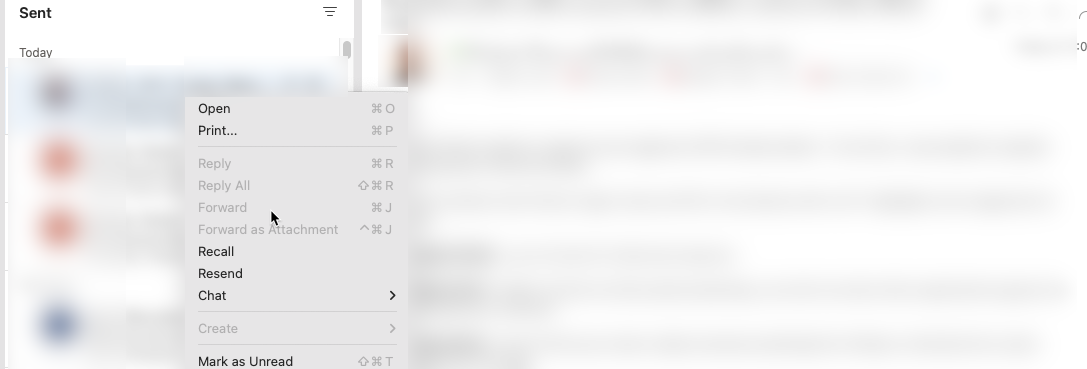AI hallucinations and creativity
AI hallucinations are not necessarily bad, just like AI in general. The key, as always, is how we use it and to what ends.
Overinformation
I’m bugging out from all the information about vegan food I found. Too much too fast. But this is how I roll.
One thing I’m realizing as I transition to vegan foods is the need to cook more often. 🥗
Most restaurants don’t have a lot of vegan options (even here in NYC, it’s kind of an “add-on” section on the menu, and dedicated vegan restaurants close down all the time), and vegan groceries are usually super-duper processed.
Looks like I’ll need to get over my fear of food processors and blenders. But at the same time, a mental note for myself that everything takes time, and I won’t just “learn kung fu”. It’s a life thing, not a week thing.
Cory Doctorow explains the problems in Bluesky’s privacy policy:
Pluralistic: Bluesky creates the world's weirdest, hardest-to-understand binding arbitration clause (15 Aug 2025) pluralistic.net
It’s a long and interesting article. Doctorow knows his way around privacy laws and terms of service.
As things stand, Bluesky has very bad terms of service that every user who creates an account has to subject themselves to. In particular, Bluesky’s ToS contain a “binding arbitration” waiver that forces users to surrender the right to sue Bluesky no matter how the company harms them.
It’s a bottleneck problem. You want to use Bluesky, you have to have an account with them, which essentially means it’s their account and data to do whatever they wish with it. And even though Blue Sky is pretty cool and Jay Graber is pretty awesome, their investors aren’t necessarily good news, and when they want more money, we’ll have the same old problem we always have.
I caved and bought a pixel 9a. It’s heavily discounted. Getting rid of grapheneOS just seems to be too much of a pain.
Blogging is chatting
“Finding time and energy to blog can be challenging, but it’s a necessary outlet for processing thoughts and inviting conversation.” pshh. Thanks ChatGPT, that quite nails it. Also, let me know why you blog, if you do.
Excel. Copy-paste to create another sheet (tab) from a selection. Forgot the headers, going back to copy those. Insert a line to paste the headers.
…how do you insert a blank line? Is it Enter? Nope. Is it Ctrl+Enter? Nope. Is it somewhere in the “Insert” section of the god-awful ribbon? Not that I can see.
Oh god, you’re actually going to have me search for this online?? Fine….
Helpful Co-pilot-in-your-face-rather-you-want-it-or-not: double-click. Nope. Alt-Enter? Nope.
Time to sort through individual posts from someone who has Office tips for a PC version from 1997…
Happens half the time I have to use Microsoft products.
I'm 70 percent vegan already...
I need to tighten the knob on my diet a bit more and commit to exercise as a non-negotiable. No surprises there really.
Here’s an upside to having those newsletters in your email you don’t remember signing up for:
A random independent coffee shop in Portland is telling me it’s relocating… I vaguely remember it from my visit a few years back; a nice reminder though ☕️
Recent updates to Micro.blog postings
I am reviewing some of the recent updates to Micro.blog’s postings that make life easier: summaries (excellent when cross-posting to other social media), automatic alt description for images, and the new preview option in the macOS app
I set up my new standing desk today. I decided I miss standing after all. Cable management is always a challenge with these. I ordered a new pneumatic monitor stand so I can pull it up and down quickly. We’ll see how it goes.
Here’s a screen capture of one of the things that drives me nuts with Outlook.
Why doesn’t Outlook let me forward this email? Why is it grayed out? The messages under this one are fine, this one is not. It’s not a conversation or a thread; I have those disabled. So what gives?


I’m enjoying A Declaration of the Rights of Magicians by H. G. Parry 📚 more than I thought I would.
Parry’s ability to describe feelings and thoughts going through the mind of people works like glue between plot points and characters. It’s been a while since I was able to get into the heads of the characters I’m reading about and see them clearly in my mind’s eye. Such a difference from my previous book!
You know, not every day’s productivity needs to be measured by helping others with their problems. That’s what I do for work, sure, and today was a little less of that. But I got to learn new things and hang out with people I care about. That’s a win in my book.

I started reading: A Declaration of the Rights of Magicians by H. G. Parry.
Picked up the book at one of those free drop offs at a local cafe, and I’ve been enjoying it so far.
I love Darn Tough socks. They processed my warranty, gave me a code for my two old pairs (that lasted for about 5 years), and I’m paying exactly $0. Shipping is free too. And don’t get me started on how good these socks are!
Yesterday we finished watching season two of Severance, and it got me so angry. I was fuming. I had to go for a walk and leave poor Nat with the takeout containers to clean (I did apologize and say he can just put it in a bag, but the shock I gave him was a different story)
Why was I so angry? To explain that I need to explain more than a decade of my lifestyle and the impact it had on my life in light of what is considered to be normal or usual, which is what I suspect the show’s target audience is.
Don’t get me wrong, the show itself is great, the story is good, and my anger wasn’t really directed at the story or the characters in it; it was mostly directed at its creators and the mindset. And from there it escalated to the whole “what’s wrong with the world,” and me barking at clouds again.
The good thing that came out of it, besides the nice walk, was to start a new lifestyle category on my blog and see how it goes. The trick is to know what not to include under “lifestyle,” because I have a tendency to use “life” as an overall category for everything that doesn’t fit anywhere else.
So while I’m not 100% sure what it will be yet, it’s there, with its own dedicated RSS feed and all (I need to explain the feeds of my blogs a bit better for you RSS folks out there).
I’m wondering what some good books about China? History, Culture, Finance, Politics, Military… Looking for a “bird’s eye view” book that is not too dry. 📚
Thinking about organizing my RSS stuff
I should improve my RSS organization, and I’m wondering where to start - it’s quite a mess.
An interesting piece from Mike Elgan:
Why Mexican cartels are fighting in Ukraine
https://machinesociety.ai/p/why-mexican-cartels-are-fighting

